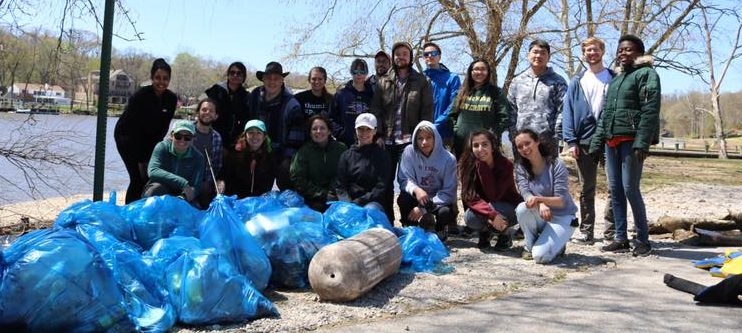
I am very excited to share what our lab has been working on for the 2019 Summer Impact Research Project: Microbial Communities as Indicators of Ecological Health. Dhanush Banka (a student from Thomas Jefferson High School for Science and Technology) and I have been working in Dr. Salerno’s lab at the Potomac Science Center, George Mason’s research center on the Occoquan River. Our environmental samples have been collected by Dr. van Aken’s lab, where fellow OSCAR student Nick Mills is working on the sediment samples. My focus is on the water samples taken from Cameron Run and Hunting Creek in Alexandria, VA as part of the environmental monitoring project that GMU does in association with Alexandria Renew Enterprises, the local wastewater processor for that area.
This is the first year that water samples are being surveyed to determine the microbial population. We have learned how to perform DNA extractions from the samples, how to quantify our results using two different methods, and also how to amplify the DNA in preparation for submitting the samples for DNA sequencing. We’ve been waiting patiently for the sequencing data, which will allow us to identify not only the types of bacteria present, but also the relative abundances to be able to get an idea of the composition of the microbial community. We’re correlating those results with rainfall, water flow, river height, and temperature data to build a profile and possibly model how changes in the environment will affect the microbial community. Since Cameron Run parallels the Capital Beltway and Hunting Creek adjoins Alexandria, the water samples are from an urban environment, and we expect the composition of the microbial community to reflect that.

As with most things regarding our environment, we don’t know where we’re going if we don’t know where we’ve been. Without some initial information, surveys, or records, we don’t know what affect our changing climate or other anthropogenic activities are making in our own environment. The unseen microbial community far outnumbers all of the life that we can see, and because it grows so much more quickly than other visible organisms the microbial community is the ‘pulse’ of the environment. Our ability to identify microbial families through the use of environmental DNA is a breakthrough, a new tool that we’re only beginning to learn how to use. We now have the genetic tools available to discover far more detail about the world around us than we have ever had in our history. As an older, non-traditional student, I’m excited to be part of this research, even as an undergraduate student. These new tools, this new technology, and these new techniques are what inspired me to pursue a degree in biology. That’s what I wanted to learn and that’s why I’m at George Mason University where I am part of a team using these tools to conduct real field research in my own community.






